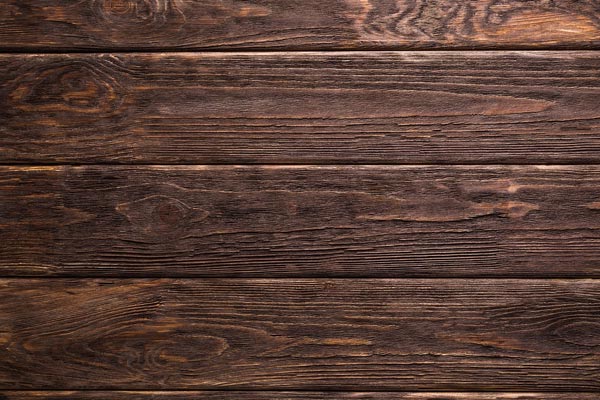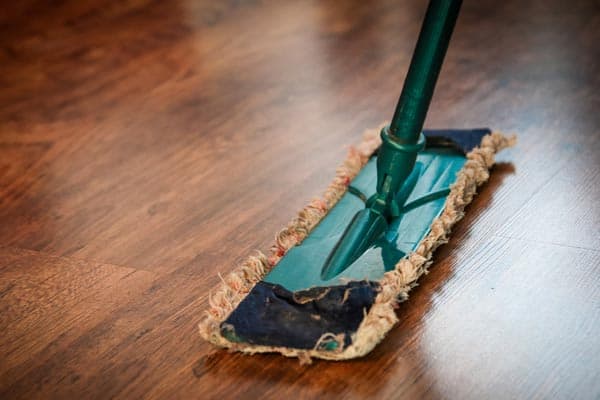Nine Ways to Remove Heat Stains From Wood
A white heat stain can easily ruin the look of your wooden desk or table. While covering up the stain is a potential solution you could try, it would be better to remove it.
This way, you can restore your wooden piece of furniture to its original look and forget the white heat stain that ever existed.
How to Remove Heat Stains From Wood
A few methods to remove white heat stains from wood include using common household products like toothpaste, petroleum jelly, iron, oil and salt, vinegar, steel wool, blush remover, consulting an expert, and sanding the furniture down before staining it again. You can also save your table by using placemats because prevention is always better than trying to fix a stain once it appears.
If you’re wondering how to use these methods to remove heat marks from wooden furniture, we’ll go in-depth on them for you. You can cycle through them until you find the one that works best for your situation, and we’ll talk about what leaves heat marks on wood in the first place below.
What Leaves Heat Marks on Wood
When you put a hot pizza box or a hot cup of coffee on a wooden table or on any type of wooden furniture, the heat from this object causes the wood’s pores in the wood to open and allow moisture in.
As the wood cools down, the pores start to close, trapping inside the moisture will create a nasty white stain.
Black marks on the wood aren’t likely caused by everyday heat exposure. The most likely explanations are oxidation, charring, and rotting.
We’re not going to go into depth on these stains, though, as we’re going to stick to the white stains and how to remove them.
Nine Ways to Remove Heat Marks From Wooden Furniture
We’ve compiled a list of nine ways you can try to remove white marks from your furniture, and you should note that your results will vary based on the type of wood your furniture features, the finish, or the varnish.
We strongly recommend that you test the method on a small portion of the furniture that isn’t visible before you try it on the larger stained area to avoid causing a bigger issue.
If your wood has varnish on it, the methods may not work, especially if you apply the varnish after you introduce a stain.
This may damage the varnish, but you can minimize the risk by speaking to a furniture restoration expert rather than trying to do it yourself. Once you remove the stain, we recommend applying a varnish to prevent future stains from forming.
1. Steam Iron
Using a steam iron is one thing that most people have reported the most success with, even though it seems odd to try and remove heat stains from your furniture by applying more heat.
The idea is that the iron will re-open the wood’s pores in the wood and allow it to release the moisture that it has trapped.
First, you have to clean the wooden table or wooden surface with a slightly damp cloth to ensure that there is no dust left.
You want to put a cotton towel over the stained spots and put the iron on the low heat setting and place it on the damp towel.
Allow it to rest for a short time before checking to see if it’s still there. You can also iron the area to help remove the heat stain quickly and efficiently. Ensure it’s not too hot, or it’ll burn the furniture.
If it doesn’t work the first time, do the process again. If you don’t have a steam iron available, all you have to do is spray the water on the towel and hold it on the wood for a short period. You can also hover the iron above the stain without using a towel.
2. White Toothpaste
A non-gel white toothpaste has baking soda that is an alkaline substance that can react to the heat stain to remove it. For the best results, mix your toothpaste with the baking soda to create a paste.
Get a bowl and mix the baking soda and toothpaste first and add a few drops of water if it’s too thick to do much with.
However, you want to try to create a paste without water, and remember that it works with regular toothpaste instead of gel.
Your wooden surface needs to be clean and dry before you attempt this method. Rub this mixture into the heat stain on the surface and wait for 10 minutes. Wipe away the mixture with a clean, dry cloth to ensure that you get all of it.
3. Petroleum Jelly or Mayonnaise
Another way to remove these white marks from the wood is using a product you have at home using the mayo method.
Mayo is a very oily substance, just like petroleum jelly, and this oil allows it to release moisture out of your wood furniture.
Get a clean cloth and rub the mixture into the stain. Allow it to sit for an hour before cleaning it off.
4. Salt and Oil
Did you know that using salt and oil is a good way to remove stains from wood? Apply a mixture of oil and salt to the impacted area.
You should allow it to sit for an hour before wiping it off because this gives the mixture time to open the wood’s pores and let the moisture out.
5. Oil and Vinegar
Get a bowl and mix in equal amounts of vinegar and olive oil to create a slightly thicker paste. Get a clean cloth and coat it in the mixture before wiping on the heat stain.
You want to ensure that you remove all the liquid when you finish so you don’t make a bigger stain.
6. Steel Wool with Lemon or Olive Oil
Get a ball of super fine steel wool and add olive oil or lemon oil to the stain’s surface. Test a small area before you cover the whole stain to ensure you don’t damage it.
Using the incorrect steel wool can scratch the wood’s surface, and scratching the surface can look worse than the white mark or heat stain. So, be careful not to overdo it and work slowly.
7. Sanding Your Wooden Furniture
It’s more difficult to remove white heat marks on older furniture or tables because the moisture sinks deep into the wood.
In this situation, the best thing you can do is sand down the area affected by the white stain. You will use sandpaper to rub down the wooden table until you remove the stain.
Once you notice the white mark is gone, you must repaint the table to cover the area you sanded or cleaned the surface and apply a finish to protect it. If you’re not confident in your abilities to do this, you should consult a professional.
8. Contact an Expert
If you want to be 100% sure to protect your wooden furniture, the best thing you can do is to contact a professional.
They’ve most likely encountered this same problem on a host of furniture pieces, and they’ll know how to safely remove it without causing further damage. Getting their advice may not cost you anything either until they go to repair it
9. Blush Remover
This easy heat treatment method offers no danger of burning your furniture’s finish. You do have to buy something, and there are many brands of Blush Remover available at your local hardware stores to choose from, including brands and products like Behlen Blush Eraser and Mohawk No Blush.
If they’re not available in your local stores, you can find them online. To use them, all you have to do is to spray the stain with the blush remover enough to get the area wet and leave it until the mark vanishes.
Get a soft brush and lightly feather the area to help it evaporate, and resist wiping until it’s completely dry.
How Placemats Remove Heat Stains from Wood
Ideally, you’ll take a proactive approach to heat stains and stop them from happening in the first place.
One obvious solution is getting placemats and putting them onto your wooden furniture before you set anything hot on it.
You can get them online or in virtually any store, and they come in a huge range of sizes, shapes, colors, and textures to match your decor.
Bottom Line
There are nine ways you can protect your wooden furniture and keep it looking nice for years to come, and you can try each method to see which one successfully lifts the heat stains out of your space.
One may work better than the others; just be sure to test it on a small spot before you take on the larger spot.






